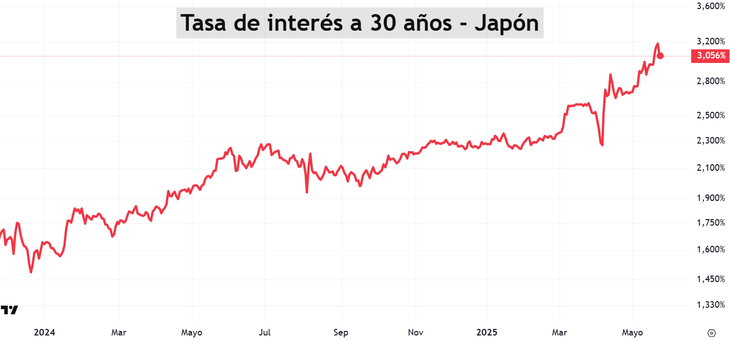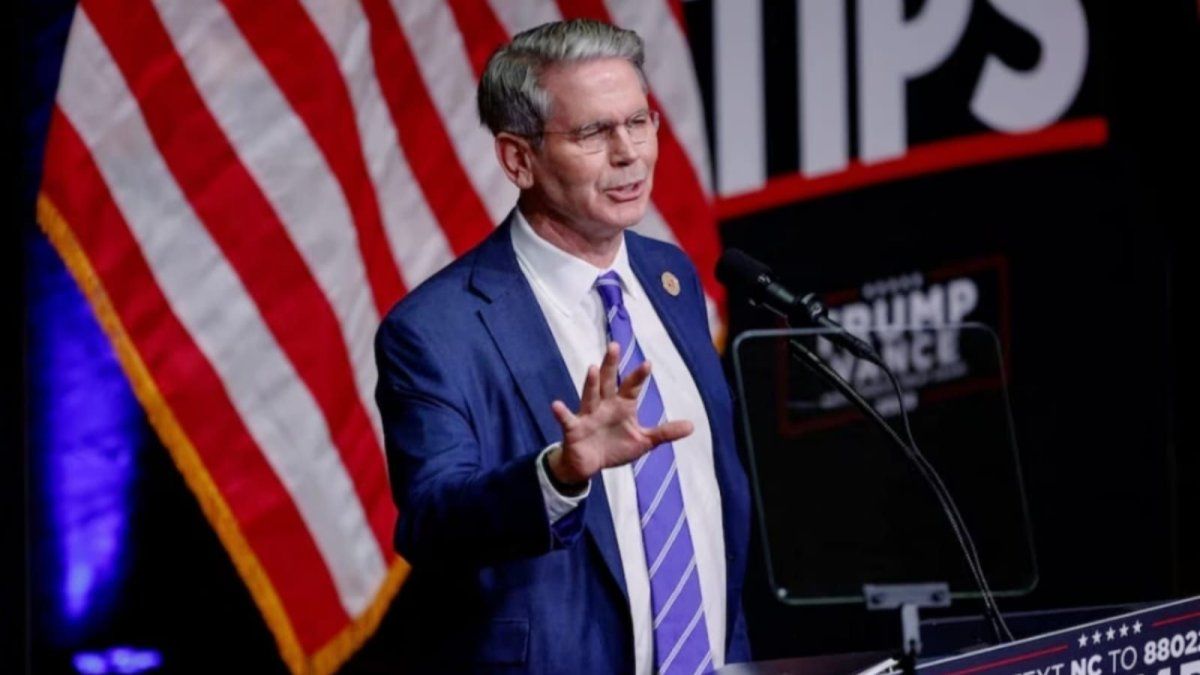The interest rate of the bonds of the US Treasury He climbed again. And beyond that they are numbers that we see every day, this movement has important consequences for markets.
The 10 -year bonus yield exceeded 4.50%, the 30 -year -old climbed to 5.03%and the 2 -year -old was 4%.
Let’s look at what happened with the 10 -year rate:
TASAFED1.PNG
He marked maximums of recent months and accelerated strong in recent weeks. What happened?
The market narrative changed. He went on to talk about “Commercial Agreement” either “Reciprocal tariffs” to focus on the bond market and the US fiscal deterioration. And that is no accident: the rise in long -term rates is not just a technical theme.
There is a deeper issue: the growing distrust about the fiscal sustainability of the United States. With a debt level that exceeds US $ 36 trillions and an increasing expense that does not find a brake, the market begins to demand a higher interest rate to lend money to the treasure.
This is a structural change. It is not driven by a specific inflation fact, nor by a Fed conference. It is something deeper. And when the asset that was considered the safest in the world begins to generate doubts, the entire system is reconfigured.
Debt grows and interest to pay too. So? That demands more tax issuance or adjustment, and if none of that is corrected, credibility deteriorates even more. A vicious circle that we know well in Argentina.
And what role does the market have in all this?
Last week, Trump said he was watching the bond market and that he saw it “beautiful”. That phrase did not go unnoticed. Trump himself confirmed that his decision to stop the tariff escalation had to do with what was happening in the bonds. In other words: the rise in the interest rate stopped the trade war.
And when the rates rise strong, everything is more expensive. Business financing, mortgage loans, state liabilities. It is a hardening of financial conditions, although the FED has not touched the reference rate. Because? Because the Fed only controls the short -term (reference) rate. The long -term is governed by supply and demand, where a lot of factors influence.
This is also generating a capital movement worldwide. Japan, in fact, is seeing historical maximums in its 30 -year bonus that already yields 3.06%.
RateFed2.png

In absolute terms it seems little, but compared to its history is a huge leap. The Bank of Japan is in a dilemma: if it goes up to the market, it cools the economy; And if you do nothing, there may be a debt crisis.
This also explains why several funds are reviewing their assignment to global fixed income. It no longer reaches with “Buy US bonds” And sleep peacefully. Today we need to look at what duration you have, how much fiscal risk is willing to assume, and if it makes no more sense to diversify in emerging market bonds or countries with a better debt/GDP ratio.
And we are not talking only about a technical adjustment. This is a paradigm change. A 5% rate in the US 30 -year bonus with low inflation has not been seen for years. What the market is saying is that, even without inflationary shocks, it does not believe that the American debt is sustainable at lower rates.
This has several implications:
Fed’s “put” loses strength. If long rates shoot without the Fed rise, monetary policy loses effectiveness. And the market stops trusting the ability of the Fed to anchor expectations.
The pro-trump narrative changes. Until recently it was believed that if Trump won, the bonds would go up. Today, the market doubts. Its expansive fiscal policies can further accelerate this problem.
This context opened the doors to the great winners of recent months, such as Gold and Bitcoin, which is behaving differently from the actions.
In fact, let’s see the behavior of gold, Bitcoin, S&P 500 and long US bonds (ETF TLT) since Trump won:
RateFed3.png

Since Trump won the elections, financial assets moved very differently. While the S&P 500 barely rose 1.5%, the long bonds (TLT) fell more than 6%, reflecting the impact of the rise in rates.
In contrast, gold advanced more than 22% and Bitcoin took off with a rise of 60%, showing that in a context of fiscal uncertainty and doubts about the sustainability of US debt, many investors are looking for refuge or alternatives outside the traditional system.
This graph is not just a visual summary, it is a sign of what is happening. And the distrust in the bond market is not trivial.
Finally, I want to invite you to download this suggestion for free. There you will find 7 concrete ideas with really surprising alternatives, which present a great risk-back relationship. You can download it in this link: https://clubdeinversores.com/pdf-7-ideas-de-inversion-para-2025/
Note: The material contained in this note should not be interpreted under any point of view as an investment council or recommendation for the purchase or sale of a particular asset. This content has only educational ends and represents only an opinion of the author. In all cases it is advisable to advise with a professional before investing.
Source: Ambito
David William is a talented author who has made a name for himself in the world of writing. He is a professional author who writes on a wide range of topics, from general interest to opinion news. David is currently working as a writer at 24 hours worlds where he brings his unique perspective and in-depth research to his articles, making them both informative and engaging.




